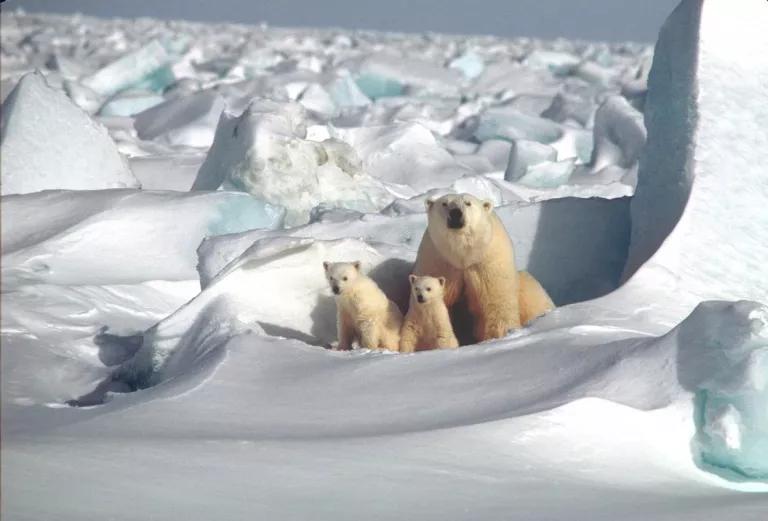
Drilling in the Arctic Ocean entails terrible risks. And efforts are afoot in Congress to make them even worse, by jettisoning safety regulations for the region.
The heads of a bi-partisan, blue ribbon commission have just written on behalf of all its members to both the Senate and the House in an effort to head that off.
The commission, the most respected, high-level body ever assembled to advise the Nation on offshore drilling safety, was created by presidential order in the wake of the Deepwater Horizon disaster.
That catastrophe occurred in relatively calm seas with vast emergency response capability nearby. By contrast, as the commission pointed out, the “Alaskan Arctic is characterized by extreme cold, extended seasons of darkness, hurricane-strength storms, and pervasive fog.” It’s “covered by varying forms of ice for eight to nine months a year,” and “oil-spill response efforts are complicated year-round by the remote location and the presence of ice, at all phases of exploration and possible production.”
As a result, and given the extreme sensitivity of Arctic marine resources, the committee’s 2011 report concluded that Arctic-specific drilling and response regulations were needed for any oil and gas activity in the region.
Last summer, the federal government finally acted, adopting regulations for offshore exploration in our federally owned Arctic waters. The rules don’t—and couldn’t—ensure effective clean-up in that unforgiving environment, or eliminate the horrible specter of an uncontrolled well gushering under winter ice for eight months. But they do mandate more response capability for any Arctic Ocean exploratory drilling, including ready access to fundamental counter-measures like capping stacks and containment domes. And, critically, they require the on-site ability to drill a relief well in case those other measures fail.
In December, President Obama wisely put 98% of the U.S. Arctic Ocean off limits to future oil and gas leasing. But the regulations remain vitally important, not least because areas still open for drilling encompass key habitat for imperiled seabirds and whales, and rim the coast of the Arctic National Wildlife Refuge, with its maternal den sites for polar bears.

A major spill there would devastate not just those waters and the adjacent coastline, but could spread far and wide, reaching even into Canada.
Now, Alaska’s lone, oil-happy congressman, Representative Don Young has introduced a resolution that would overturn those safety regulations and bar any similar rules in the future. And Alaska Senators Murkowski and Sullivan have just met with President Trump and new Interior Secretary Zinke, talking about oil development in the Arctic Ocean, and particularly about “how to overturn Obama-era regulations.”
That would be, almost literally, throwing caution to the winds—the high winds and high seas of a fragile, beautiful Arctic Ocean that needs all the protection it can get.
